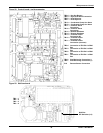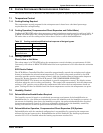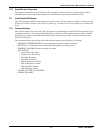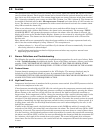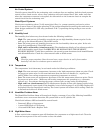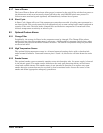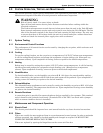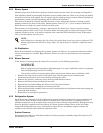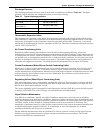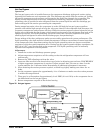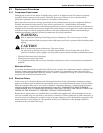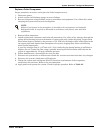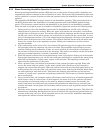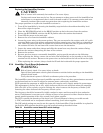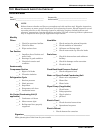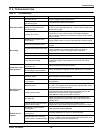
System Operation, Testing and Maintenance
57 Liebert
®
Mini-Mate2
™
Discharge Pressure
The discharge pressure will vary greatly with load and ambient conditions (Table 23). The high-
pressure switch will shut the compressor down at its cut-out setting.
Thermostatic Expansion Valve
The thermostatic expansion valve keeps the evaporator supplied with enough refrigerant to satisfy
load conditions. Proper valve operation can be determined by measuring superheat level. If too little
refrigerant is being fed to the evaporator, then the superheat will be high. Conversely, if too much
refrigerant is being supplied, then the superheat will be low. The correct superheat setting is between
10 and 15°F (5.6 and 8.3°C).
Air-Cooled Condensing Units
Restricted airflow through the condenser coil will reduce the operating efficiency of the unit.
Additionally, it can result in high compressor head pressure and loss of cooling. Using compressed air
or commercial coil cleaner, clean the condenser coil of all debris that will inhibit airflow. In winter, do
not permit snow to accumulate around the side or underneath the condenser. At the same time check
for bent or damaged coil fins and repair as necessary. Check all refrigerant lines and capillaries for
vibration and support as necessary. Carefully inspect all refrigerant lines for signs of oil leaks.
Coaxial Condensers (Water/Glycol-Cooled Condensing Units)
Each water- or glycol-cooled condensing unit has a coaxial condenser consisting of an exterior steel
tube and an interior copper tube. If the water supply is clean, coaxial condensers do not normally
require maintenance or replacement. Should your system begin to operate at high head pressure with
reduced capacity and all other causes have been eliminated, the condenser may be obstructed or
fouled and should be replaced.
Regulating Valves (Water/Glycol Condensing Units)
The water regulating valve automatically regulate the amount of fluid necessary to remove the heat
from the refrigeration system, permitting more fluid to flow when load conditions are high and less
fluid to flow when load conditions are low.
The water regulating valve is designed to begin opening at 180 psi (1240 kPa) and to be fully opened
at 240 psi (1655 kPa). The valve is factory-set and should not need adjustment.
Glycol Solution Maintenance
It is difficult to establish a specific schedule of inhibitor maintenance since the rate of inhibitor
depletion depends upon local water conditions. Analysis of water samples at time of installation and
every six (6) months should help to establish a pattern of depletion. A visual inspection of the solution
and filter residue is often helpful in judging whether or not active corrosion is occurring. The
complexity of problems caused by water requires expert advice from a water treatment specialist plus
a regular maintenance program schedule. It is important to note that improper use of water
treatment chemicals can cause severe problems.
Proper inhibitor maintenance must be performed in order to prevent corrosion of the glycol system.
Consult your glycol manufacturer for proper testing and maintenance procedures. Do not mix
products from different manufacturers.
Table 23 Typical discharge pressure
System Design Discharge Pressure, psig (kPa)
Air-Cooled 200-300 (1380-2070)
Water-Cooled 65 to 85°F water
(18 to 29.4°C)
200-250 (1380-1725)
Glycol-Cooled 250-350 (1725-2415)
High-Pressure Cut-Out 400 (2760)



